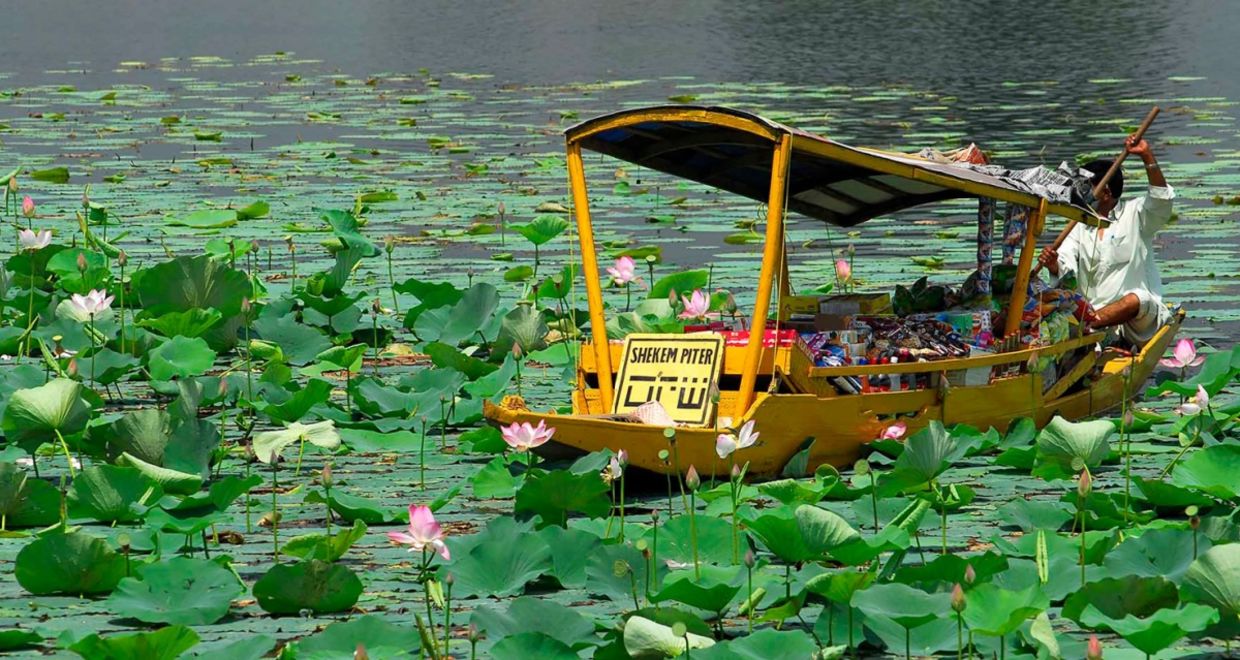
(Chaton Chokpatara / Shutterstock.com)
Lotus flowers symbolize spiritual enlightenment and purity in Hinduism, but it is also a sign of prosperity. For farmers in Kashmir, harvesting the edible lotus stems in Wular lake was a way to earn a living.
The lake supported 500 people who harvested and sold nadru, the edible stem that is considered a delicacy, until it silted over after floods in 1992 and the lotuses grew no more, reported The Guardian. Now, thirty years later, after conservation efforts removed the silt, the lotus flowers are blooming again.
Restoring the Lake
Over the past 30 years, the condition of the lake worsened, and the lake actually shrunk by nearly two thirds. Part of it was due to the land being converted for farming and the willow plantations around the lake led to an increased buildup of silt.
In 2020, Wular Conservation and Management Authority (WUCMA) began a program to de-silt the lake, restore its depth, and remove waste. More than 7.9 million meters of silt were removed and five years later, the lotus flowers returned.
This has cheered environmentalists and locals alike, reported The Hindustan Times. Showkat Ahmad of SK Bala village who works for WUCMA said this is the first time he has seen lotus stems in Lake Wular in decades.
“I am more than 30 years old. I have never seen lotus in Wular. Last year I saw the bloom for the first time. Now it’s massive and credit goes to the desilting,” he told The Hindustan Times. He added that last year farmers took a token amount but this year the government is expanding the amount that is allowed to be picked.
A Lotus Stem Revival
When the lotus disappeared after the floods, an important part of the local culinary culture was lost too, reported The Guardian. When the stems disappeared, nadru vanished from the local diet.
“Lotus stem connects our food to the land … now that it’s back, we’re preparing dishes the way our grandmothers did, Tavir Ahmad, a local chef told The Guardian.
He and his four brothers depend on the lake for their livelihood. Seeing the lotus blooms seems like a dream come true to them.
“We had lost all hope that it would ever return. Some in our community even took up other work, like laboring, to survive. But we waited,” Ahmad said.
The return of the lotus in Wular lake shows that environmental restoration isn’t just about restoring the land, it’s also about restoring the connection to the land, said Meera Sharma, a Delhi-based environmentalist. “When nature heals, it revives everything it once nurtured – livelihoods, traditions, [and] biodiversity,” she said.
YOU MIGHT ALSO LIKE:
The Power of Nostalgic Foods
Reviving Lakes Using Ancient Methods
Indian Farmers Save Rice Varieties Seed By Seed







